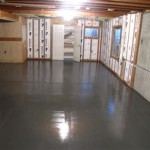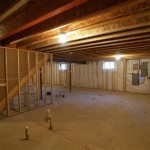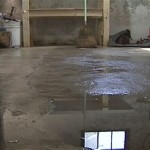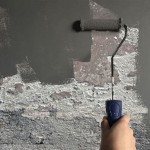Installing a Sump Pump in Your Basement: Understanding the Costs
Water intrusion in basements can lead to significant property damage, fostering mold growth and compromising structural integrity. A sump pump serves as a critical defense mechanism against flooding by collecting water accumulating around the foundation and diverting it away from the building. Understanding the costs associated with sump pump installation is essential for homeowners looking to proactively protect their property.
The overall cost of sump pump installation is variable, depending on factors such as the type of pump selected, the complexity of the installation process, and local labor rates. This article will provide a comprehensive overview of the various cost components involved in sump pump installation, enabling homeowners to make informed decisions.
Generally, the total cost for sump pump installation can range from a few hundred dollars to over a thousand. This range reflects the wide spectrum of options and installation requirements that exist. Before embarking on this project, a thorough assessment of the basement's drainage needs and potential challenges is paramount.
Factors Influencing Sump Pump Installation Costs
Several factors contribute to the cost of installing a sump pump. Understanding these variables is crucial for accurate budgeting and planning.
Type of Sump Pump: The type of sump pump selected significantly impacts the overall cost. The two primary types are submersible pumps and pedestal pumps. Submersible pumps are submerged in the sump pit, offering quieter operation and often greater pumping capacity. They, however, generally cost more upfront than pedestal pumps. Pedestal pumps, on the other hand, have the motor mounted above the sump pit, making them more accessible for maintenance. These are typically less expensive initially. The choice between these two types depends on the specific needs of the basement and the homeowner's budget.
Installation Complexity: The complexity of the installation significantly affects the labor costs. Homes without existing sump pits will require the excavation and construction of a pit, adding to the overall expense. Difficult access to the basement or challenging soil conditions can also increase labor time and costs. Furthermore, electrical work, such as installing a dedicated circuit, will require the expertise of a qualified electrician, adding to the overall cost.
Plumbing Requirements: The discharge pipe, which carries water away from the foundation, also contributes to the overall cost. The length and material of the pipe, as well as the complexity of its routing, will influence the final price. In some cases, modifications to existing plumbing may be required, further increasing the expense.
Geographic Location: Labor rates and material costs vary significantly depending on geographic location. Areas with a higher cost of living typically have higher labor rates, while material costs may be influenced by factors such as transportation expenses and local market conditions.
Permits and Inspections: Depending on local regulations, a permit may be required for sump pump installation. The cost of the permit, along with any associated inspection fees, should be factored into the overall budget. Failure to obtain necessary permits can result in fines or delays.
Additional Features: Some sump pumps come equipped with additional features, such as battery backups, alarms, and smart home integration. These features can enhance the functionality and reliability of the pump but also increase the initial cost.
Breaking Down the Costs: Labor, Materials, and Other Expenses
A clearer understanding of the contributing costs can be achieved by breaking down the costs into separate components: labor, materials, and other expenses.
Labor Costs: Labor costs typically account for a significant portion of the total installation expense. Plumbers or general contractors usually charge an hourly rate for their services. Factors affecting labor costs include the complexity of the installation, the time required to complete the project, and the experience level of the contractor. Obtaining multiple quotes from different contractors is essential to ensure a competitive price.
Material Costs: Material costs include the price of the sump pump itself, as well as the necessary plumbing and electrical components. The cost of the sump pump varies depending on the type, size, and features of the pump. Plumbing materials include pipes, fittings, check valves, and a discharge hose. Electrical materials may include wiring, circuit breakers, and an outlet. The quality of materials used can also impact the overall cost, with higher-quality materials generally being more durable and longer-lasting.
Other Expenses: Other expenses associated with sump pump installation may include permits, inspections, and disposal fees for any excavated material. These costs can vary depending on local regulations and the complexity of the project. It's essential to factor in these additional expenses when preparing a budget for the installation.
For instance, the cost of a basic pedestal pump might range from $50 to $150, whereas a submersible pump with a battery backup could cost upwards of $300-$500. The sump pit itself, if one needs to be constructed, can add another $100-$300 to the material costs. Labor expenses, depending on the region and the complexity of the installation, can add anywhere from $200 to $600 or more. This makes the total cost range anywhere from approximately $350 to over $1000. It's also worthwhile to proactively consult with a local professional for a personalized estimate.
Detailed Cost Analysis of Different Sump Pump Types and Installation Scenarios
Analyzing various scenarios and sump pump types provides a clearer picture of the expected costs.
Replacing an Existing Sump Pump: Replacing an existing sump pump is generally less expensive than installing a new one from scratch. The existing plumbing and sump pit can be reused, reducing the labor and material costs. The primary cost will be the price of the new sump pump and the labor required to disconnect the old pump and install the new one. The cost for this service might range from $250 to $600.
Installing a Sump Pump in a New Construction House: Sump pump installation is typically more straightforward and cost-effective during new construction, as the sump pit and drainage system can be integrated into the building's design. The costs will be factored into the overall construction budget. However, even in new construction, the type of pump selected and any additional features will influence the final price.
Installing a Sump Pump in an Existing Basement with No Existing Sump Pit: This is the most expensive scenario, as it requires excavating a sump pit, connecting the plumbing, and possibly running a dedicated electrical circuit. The labor costs will be higher due to the increased complexity of the project. Material costs will also be higher due to the need for gravel, concrete, and other materials to build the sump pit. This scenario often results in a cost of $700 to $1500, depending on local rates and difficulty.
Sump Pump with Battery Backup: Adding a battery backup system to a sump pump provides protection during power outages. The cost of a battery backup system can range from $150 to $400, depending on the capacity of the battery and the features of the system. Installation costs will also be higher due to the additional wiring and setup required.
Smart Sump Pump Systems: Newer smart sump pump systems offer features like remote monitoring, leak detection, and automatic notifications. The cost of these systems can range from $300 to $800, depending on the features and brand. The installation costs might be slightly higher, owing to complexities associated with connecting the pump to a home's network and app.
Impact of Basement Size and Soil Conditions: The size of the basement and the type of soil surrounding the foundation can also influence the cost. Larger basements may require a more powerful sump pump to effectively remove water. Difficult soil conditions, such as clay or rocky soil, can make excavation more challenging and increase labor costs.
Ultimately, careful consideration needs to be given to the specific parameters of your home. A qualified professional should always be consulted to best assess the water removal needs of the property and to provide a tailored explanation of the costs involved.

How Much Does Sump Pump Installation Cost 2024 Guide Forbes Home

How Much Does Sump Pump Installation Cost 2024 Guide

How Much Does It Cost To Replace Or Install A Sump Pump Homeserve Usa

How Much Does A Sump Pump Cost To Install Breaking Down Prices 2024 Bob Vila

How Much To Install A Sump Pump Elek Plumbing

What Does It Cost To Install A Sump Pump Rcc Waterproofing News

How Much Does It Cost To Install A Sump Pump

Sump Pump Repair And Installation Me

Sump Pump Cost Calculator 2024 Installation Replacement Prices

How Much Does Installing A Sump Pump Cost Everything You Need To Know







